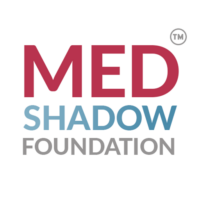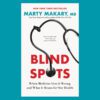Welcome to the FDA Side Effects Update. This series is designed to keep you informed about the latest safety advisories and newly documented side effects of your medications. In this installment, we’re highlighting safety updates concerning Dotarem, Elucirem, Eovist, Gadavist, Multihance, Prohance, and Omniscan.
How to Read This Report
This report is prepared using the most recent information posted in the SrLC database. It highlights recent safety labeling changes. It includes only newly reported side effects and safety information; additional side effects and warnings will appear on the drug label. Not all recent changes to the SrLC database or the label may be listed here. For all changes and the complete list of warnings and side effects, please click on the drug label link.
Each of the items (approval and update dates, drug names, etc.) contained in this report are obtained from the SrLC. The side effects and medication descriptions are simplified and made
clearer, if needed. Sometimes, additional sources, like a medical dictionary, may be used to translate technical medical phrases. Other sources (company news, FDA press releases, etc.) may be used to learn about some label changes.
FDA Adds Warning to MRI Imaging Drugs About Respiratory Problems
Magnetic Resonance Imaging (MRI) is a medical scan that uses strong magnetic fields and radio waves to produce detailed images of organs and tissues inside the body. The images help healthcare providers make a diagnosis or learn more about your condition.
Gadolinium-based contrast agents (GBCAs, also called contrast media or dyes) are intravenous drugs that are sometimes used to improve the quality of the images created by an MRI scan. GBCAs are derived from heavy metals, and depending on their molecular structure, are classified as “macrocyclic” or “linear.” GBCAs are injected into a vein at the time of an MRI scan.
Older generation GBCAs, such as Omniscan, are still available but are usually avoided because of their poorer safety profile.
Recently, warnings regarding severe lung problems including acute respiratory distress syndrome (ARDS) and pulmonary edema (fluid in the lungs) were added to GBCA drugs. These drugs have other serious warnings. See revised labels for complete details.
Dotarem (active ingredient: gadoterate meglumine) injection, for intravenous use
Initial FDA Approval: 2013
Side Effect Update Date: March 5, 2025
Medication Description: A gadolinium-based contrast agent (a type of heavy metal) used during MRI procedures to improve image quality and aid in diagnosing conditions such as multiple sclerosis, infections, internal bleeding, or cancer.
Updated Side Effects/Safety Information: There is a new warning about the risk of acute respiratory distress syndrome (ARDS) and pulmonary edema (fluid in the lungs). Patients with ARDS require oxygen support, which might include mechanical ventilation. Cases of ARDS have occurred within 30 minutes to 24 hours after GBCA administration.
Essential Extras: Dotarem is a “macrocyclic” type of GBCA agent. Macrocyclic agents are often the first-choice type of contrast agent because the body retains less of the gadolinium compared with older types. FDA issued a safety communication about the risk of gadolinium retention in 2018.
FDA Safety Announcement: Dotarem FDA Safety Label Change and Revised Drug Label
Elucirem (active ingredient: gadopiclenol) injection, for intravenous use
Initial FDA Approval: 2022
Side Effect Update Date: March 5, 2025
Medication Description: A gadolinium-based contrast agent (a type of heavy metal) used during MRI procedures to improve image quality and aid in diagnosing conditions such as multiple sclerosis, infections, internal bleeding, or cancer.
Updated Side Effects/Safety Information: A new warning about the risk of acute respiratory distress syndrome (ARDS) and pulmonary edema (fluid in the lungs). Patients with ARDS require oxygen support, which might include mechanical ventilation. Cases of ARDS have occurred within 30 minutes to 24 hours after GBCA administration.
Essential Extras: Elucirem is a “macrocyclic” type of GBCA agent. Macrocyclic agents are often the first-choice type of contrast agent because the body retains less of the gadolinium compared with older “linear” types. FDA issued a safety communication about the risk of gadolinium retention in 2018.
FDA Safety Announcement: Elucirem FDA Safety Label Change and Revised Drug Label
Gadavist (active ingredient: gadobutrol) injection, for intravenous use
Initial FDA Approval: 2011
Side Effect Update Date: March 5, 2025
Medication Description: A gadolinium-based (heavy metal) contrast agent used as part of magnetic resonance imaging (MRI) procedures to provide enhanced image quality for diagnosis of conditions such as multiple sclerosis, infections, bleeding, or cancer.
Updated Side Effects/Safety Information: A new warning about the risk of acute respiratory distress syndrome (ARDS) and pulmonary edema (fluid in the lungs). Patients with ARDS require oxygen support, which might include mechanical ventilation. Cases of ARDS have occurred within 30 minutes to 24 hours after GBCA administration.
Essential Extras: Gadavist is a “macrocyclic” type of GBCA agent. Macrocyclic agents are often the first-choice type of contrast agent because the body retains less of the gadolinium compared with older “linear” types. FDA issued a safety communication about the risk of gadolinium retention in 2018.
FDA Safety Announcement: Gadavist FDA Safety Label Change and Revised Drug Label
Prohance (active ingredient: gadoteridol) injection, for intravenous use
Initial FDA Approval: 1992
Side Effect Update Date: March 5, 2025
Medication Description: A gadolinium-based contrast agent (a type of heavy metal) used during MRI procedures to improve image quality and aid in diagnosing conditions such as multiple sclerosis, infections, internal bleeding, or cancer.
Updated Side Effects/Safety Information: A new warning about the risk of acute respiratory distress syndrome (ARDS) and pulmonary edema (fluid in the lungs). Patients with ARDS require oxygen support, which might include mechanical ventilation. Cases of ARDS have occurred within 30 minutes to 24 hours after GBCA administration.
Essential Extras: Prohance is a “macrocyclic” type of GBCA agent. Macrocyclic agents are often the first-choice type of contrast agent because the body retains less of the gadolinium compared with older “linear” types. FDA issued a safety communication about the risk of gadolinium retention in 2018.
FDA Safety Announcement: ProHance FDA Safety Label Change and Revised Drug Label
Eovist (active ingredient: gadoxetate disodium) injection, for intravenous use
Initial FDA Approval: 2008
Side Effect Update Date: March 5, 2025
Medication Description: A gadolinium-based contrast agent (a type of heavy metal) used during MRI procedures to improve image quality and aid in diagnosing conditions such as multiple sclerosis, infections, internal bleeding, or cancer.
Updated Side Effects/Safety Information: A new warning about the risk of acute respiratory distress syndrome (ARDS) and pulmonary edema (fluid in the lungs). Patients with ARDS require oxygen support, which might include mechanical ventilation. Cases of ARDS have occurred within 30 minutes to 24 hours after GBCA administration.
Essential Extras: Eovist is a “linear” type of GBCA agent. Linear GBCAs are retained more in the body and retained for a longer time than macrocyclic GBCAs. FDA issued a safety communication about the risk of gadolinium retention in 2018.
FDA Safety Announcement: Eovist FDA Safety Label Change and Revised Drug Label
MultiHance (active ingredient: gadobenate dimeglumine) injection, for intravenous use
Initial FDA Approval: 2004
Side Effect Update Date: March 5, 2025
Medication Description: A gadolinium-based contrast agent (a type of heavy metal) used during MRI procedures to improve image quality and aid in diagnosing conditions such as multiple sclerosis, infections, internal bleeding, or cancer.
Updated Side Effects/Safety Information: A new warning about the risk of acute respiratory distress syndrome (ARDS) and pulmonary edema (fluid in the lungs). Patients with ARDS require oxygen support, which might include mechanical ventilation. Cases of ARDS have occurred within 30 minutes to 24 hours after GBCA administration.
Essential Extras: MultiHance is a “linear” type of GBCA agent. Linear GBCAs are retained more in the body and retained for a longer time than macrocyclic GBCAs. FDA issued a safety communication about the risk of gadolinium retention in 2018.
FDA Safety Announcement: MultiHance FDA Safety Label Change and Revised Drug Label
Omniscan (active ingredient: gadodiamide) injection, for intravenous use
Initial FDA Approval: 1993
Side Effect Update Date: March 5, 2025
Medication Description: A gadolinium-based contrast agent (a type of heavy metal) used during MRI procedures to improve image quality and aid in diagnosing conditions such as multiple sclerosis, infections, internal bleeding, or cancer.
Updated Side Effects/Safety Information: A new warning about the risk of acute respiratory distress syndrome (ARDS) and pulmonary edema (fluid in the lungs). Patients with ARDS require oxygen support, which might include mechanical ventilation. Cases of ARDS have occurred within 30 minutes to 24 hours after GBCA administration.
Essential Extras: Omniscan is an older-generation gadolinium-based contrast agent (GBCA) with a less favorable safety profile compared to newer macrocyclic and linear agents. It is linked to nephrogenic systemic fibrosis (a serious disease of the skin and organs) in patients with kidney disease. The FDA issued a safety communication about the risk of gadolinium retention in 2018 and a safety communication about the risk of nephrogenic systemic fibrosis in 2010.
FDA Safety Announcement: Omniscan FDA Safety Label Change and Revised Drug Label






